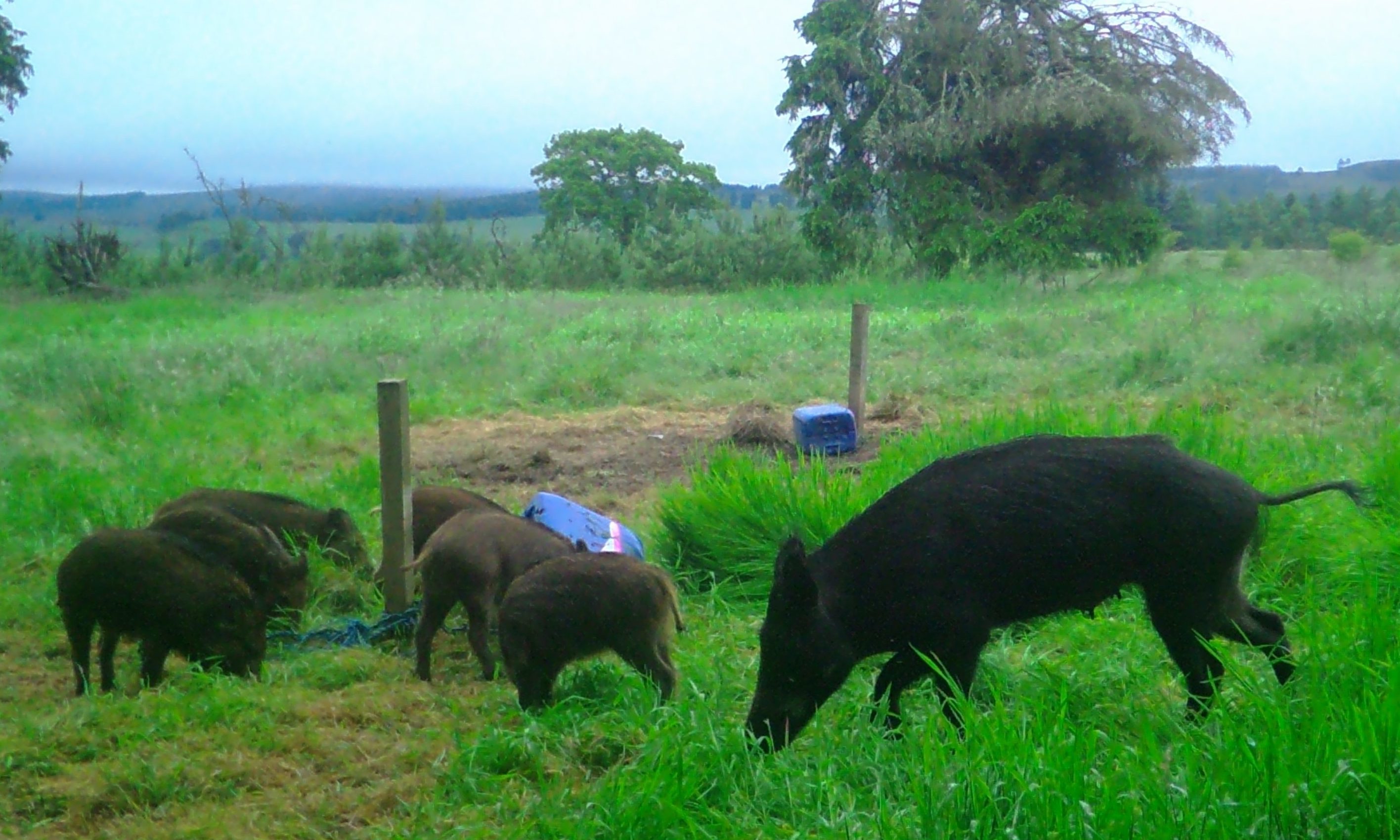Landowners have been urged to take up arms to defend the Perthshire countryside against a worrying rise in wild boar numbers.
Farmers in the Alyth Hill area have been advised to shoot any feral pigs on their land.
The area has seen a population boom after several wild boars escaped from a local estate three years ago.
Now Scottish Natural Heritage has warned that unless action is taken, the boar population could spiral out of control.
It is estimated that there are between 20 and 40 wild pigs – a mix of wild and domestic creatures – in the area.
Forest Enterprise Scotland, which manages the land, says that their camera-trap evidence suggests there are only one or two boars left in the area.
This may be because farmers have started culling the boar – although not always registering the kills – or that the animals have moved north, towards the Bridge of Cally area.
Around 30 people attended a public meeting hosted by SNH in Alyth.
Anecdotal evidence from landowners appeared to confirm that the pigs were on the move.
One woman, who lives near the Bamff Estate, said she often sees about a dozen pigs, and piglets, which cause major damage by rooting into the ground.
Local operations manager Gavin Clark said: “Nobody has been saying, ‘Oh, I love having these pigs around here, let’s keep them.’
“Everyone is of the opinion that the population will grow if its not controlled.”
He said individual landowners had responsibility for feral pigs on their property.
“While its encouraging to hear that the numbers on Alyth Hill are now low, we are concerned that the animals may have spread to new sites,” he said.
“We’re here to provide advice and coordination, if required, but I’d urge farmers, gamekeepers and other land managers to be alert and control any animals which appear to be on their land.
“Land managers should talk to their neighbours when they know pigs are around, as piecemeal control isn’t likely to be completely successful.
“Efforts need to be coordinated so that animals don’t just disperse further. Evidence from elsewhere is that if not controlled, feral pig populations can increase quite quickly and damage to crops and other property may be a problem.”
Mr Clark assured that it was unlikely for members of the public to encounter such an animal. “If you do see a feral pig, they’re likely to run away from you,” he said. “If they don’t, walk away slowly – don’t feed them and keep your dog on a lead.”
Kevin Peters, of Forest Enterprise, said that 12 boar had been shot at Alyth in recent months.
Wild boar became extinct in Britain about 700 years ago and are not considered to be a native species in Scotland.
This means that it is an offence under the Wildlife and Countryside Act 1981 to release any type of pig, including wild boar. And it is also an offence to let them escape from captivity.
An investigation into the boar population was carried out by Perth and Kinross Council and the findings were passed to the procurator fiscal. No charges were ever raised.
In 2015, local farmer David Rowe was refused permission by the local authority to keep 55 wild boar at his Bamff Home Farm.
Locals said that boars had “regularly” escaped from his property in 2014.










